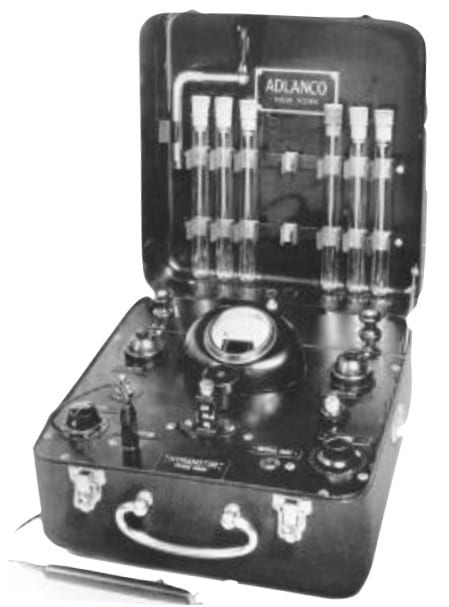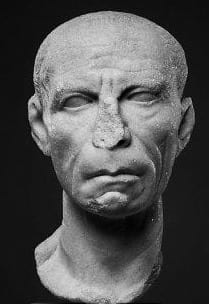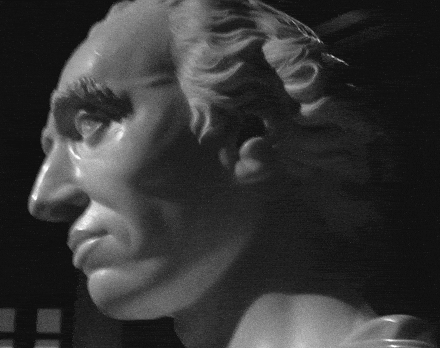Funtabulously Frivolous Friday Five 118
Just when you thought your brain could unwind on a Friday, you realise that it would rather be challenged with some good old fashioned medical trivia FFFF, introducing the Funtabulously Frivolous Friday Five 118
Question 1
The picture below is of an early piece of medical equipment from the 1930s called the “Hyman otor” What would one do with such a device?
Reveal the funtabulous answer
Defibrillate
The Hyman otor is the first example of a defibrillation device. Invented by Albert S. Hyman (1893 – 1972), a New York cardiologist and his brother. Electrodes with introduced into the stopped heart percutaneously. In a way, it was truly ground breaking in that it was, in a sense, also implantable. Disappointingly, it is unclear whether it actually worked.
Question 2
What congenital anatomical anomaly did Dr Hannibal Lecter have?
Reveal the funtabulous answer
Polydactyly syndrome middle ray duplication
A malformation involving an extra digit as well as an extra hand bone that leads to the extra digit
Question 3
What did John F. Kennedy and Charles Dickens have in common?
Reveal the funtabulous answer
Addisons Disease.
The rare chronic endocrine disorder whereby the adrenal glands fail to produce steroid. Typically the patient will present with non-specific symptoms, orthostatic hypotension, increased pigmentation and may have other autoimmune diseases.
Question 4
What possible neurological diagnosis did this Roman suffer from?
Reveal the funtabulous answer
VIIth nerve palsy
Those of you that are observant would have noted the weakness of the right levator anguli oris, zygomaticum, orbicularis oculi and frontalis. The weakness of both the lower and upper facial nerve indicates a peripheral lesion rather than a pathology at the pons.
The most popularized theory is Bell’s Palsy which accounts for 65-70% of unilateral nerve palsies today (not sure what the prevelance in Roman times). This condition was initially noted in patients with suppurative ear pathology and likely transitioned to infection in the parotid gland.
More commonly today it is due to the herpes simplex virus. However, the longstanding atrophy seen in this sculpture raises the possibility of another diagnose. On the right side of the head, above the level of the ear there is a scar. So did he have a trauma fracturing his temporal bone causing permanent injury to the facial nerve? I’m sure the Romans were no stranger to the odd brawl.
Question 5
Sir George Savile collapsed. What sign is on his ear that gives us a clue to the possible diagnosis?
Reveal the funtabulous answer
Frank Sign
A crease running diagonally across the earlobe extending from the tragus across the lobule to the rear edge of the auricle
Sanders T. Frank M.D first described this sign in 1973 demonstrating significant association with carotid intima-media thickness coronary artery disease and cerebrovascular disease.
Sir George Savile (1726–1784) was an 18th century political figure and 8 months prior to his death while speaking to the house he found himself too weak to speak and had to sit down. The sudden weakness, Franks sign and subsequent demise over 8 months in a relatively health man gives us some clues to his death. The differentials include uncontrolled angina and ischaemic stroke.
- Frank ST. Aural sign of coronary-artery disease. N Engl J Med. 1973; 289: 327–8.
- Hughes N, Ramachandran M, Aronson JK. The diagnosis of art: Sir George Savile, 8th Baronet – the ears have it? J R Soc Med. 2008 Dec 1; 101(12): 605–606.
- Agouridis AP et al. Ear lobe crease: a marker of coronary artery disease? Arch Med Sci. 2015 Dec 10; 11(6): 1145–1155.

FFFF
Funtabulously Frivolous Friday Five
Dr Neil Long BMBS FACEM FRCEM FRCPC. Emergency Physician at Kelowna hospital, British Columbia. Loves the misery of alpine climbing and working in austere environments (namely tertiary trauma centres). Supporter of FOAMed, lifelong education and trying to find that elusive peak performance.




